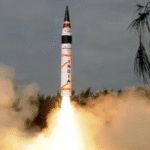
DeepSeek is a Chinese technology company with the main thrust in AI, machine learning, and big data analytics. This firm falls into China’s efforts to lead globally in AI and other advanced technologies. DeepSeek offers AI-based solutions in several fields such as finance, health care, logistics, and smart cities. This works according to the “Next Generation Artificial Intelligence Development Plan,” the national strategy that calls for dominating the world in AI by 2030.
DeepSeek’s technologies aim to achieve better efficiency, automating processes and making predictions through big data. Like most other AI companies, DeepSeek exists in a space that is concerning about data privacy, cyber security, and ethical use of AI. Given the regulatory environment in China, however, there are apprehensions as to how the data that Chinese companies collect may be weaponized for political purposes by its government, especially in the context of surveillance and national security.
Strengthening Domestic AI Capabilities
India and America have been actively watching the emergent Chinese AI companies like DeepSeek as it presents strategic, economic, and security challenges for both India and the United States. How they might respond remains in the realm of speculation below:
- Enhance internal AI capabilities to ensure domestic independence from the threats and dangers the AI presents.
India and the U.S. are keen to develop their respective AI ecosystems, which can check the increasing dominance of China in the AI field.
India Strategy:
- Advertisement -
India has come out with the National Strategy for Artificial Intelligence (NSAI), where the country aims to be at the forefront globally in AI. It is concentrating on healthcare, agriculture, education, and smart cities.
The Indian government is investing in R&D through initiatives such as the National Mission on Interdisciplinary Cyber-Physical Systems and partnerships with academic institutions and private companies.
India is also building AI-driven solutions for both domestic and global markets by leveraging its strengths in software development and IT services.
America’s Approach:
The United States has been a global leader in AI innovation, with companies like Google, Microsoft, and OpenAI leading the charge. The government has also prioritized AI through initiatives like the American AI Initiative and the National AI Research and Development Strategic Plan.
It has been investing highly in AI R&D to ensure that it keeps its technological advantage over China. This includes the funding of AI research at universities, national labs, and private companies.
- Regulating Chinese AI Technologies
Both India and the U.S. have concerns about the risks that the Chinese AI technologies pose, mainly in terms of data security and surveillance.
Indian Approach:
India has pursued the cautious route of chocking hundreds of Chinese technology companies, especially TikTok and WeChat, on security grounds. This may include AI developed by DeepSeek, for instance.
It also proposed a Data Protection Bill aimed at regulating data collection, storage, and processing in the country. The move may impact foreign companies engaged in AI work.
American Approach:
The U.S. has continued to tighten restrictions on Chinese tech companies. Such a restriction by the Trump administration resulted in prohibiting Huawei and ZTE from using its technology, citing security threats. Such regulations can also affect DeepSeek if Chinese AI firms continue on such paths.
Currently, the U.S. has begun creating and developing regulatory aspects for ethical application of AI-based technologies to further safeguard the data of the end users and mitigate any kind of misuse of those technologies.
- Strategic Alliance Building
Both India and the U.S. will probably cooperate with like-minded nations to build a counter-narrative against China’s AI supremacy.
India’s response
In the Quadrilateral Security Dialogue, India is one of the member nations along with the U.S., Japan, and Australia. It had discussed coordinating on the emerging technologies, including AI, to check the influence of China.
It is also on the right track by strengthening the bilateral relation with European nations and nations in Southeast Asia for coordination on AI research and development.
America’s response
The U.S. is taking the lead in establishing a coalition of democracies to establish global standards for AI development and use. This includes working with allies in Europe, Asia, and beyond.
The U.S. is also urging its allies to limit the use of Chinese AI technologies in critical infrastructure, citing security risks.
- Addressing Ethical and Security Concerns
Both India and the U.S. are concerned about the ethical and security dimensions of AI technologies, especially those produced by Chinese companies.
India Approach:
India is developing frameworks that ensure the responsible and transparent use of AI technologies. This involves guidelines on data privacy, algorithmic bias, and accountability.
The Indian government is also investing in cybersecurity to protect critical infrastructure from potential threats posed by foreign AI technologies.
America’s Approach:
The U.S. is pushing global discussions and debates on responsible AI use via organizations such as the OECD, GPAI.
The U.S. is committing to AI driven cybersecurity solutions toward protecting against threat actors, which include state actors and non-state actors.
Economic Competition (5)
Both India and the U.S. are competing with China to dominate the global AI market, which is expected to be worth trillions of dollars in the coming decades.
India’s Approach:
India is positioning itself as a hub for AI innovation and talent. The country’s large pool of engineers and data scientists gives it a competitive advantage in the global AI market.
India is also persuading startups and small businesses to embrace AI technology for economic development.
America
The U.S. is trying to sustain the lead in global AI market due to its potential in innovation and entrepreneurship. In this regard, it is funding startups and performing advanced research in the field of AI.
America is also promoting the entry of its AI enterprises into the world market while ensuring that Chinese business rivals do not gain too much influence.
Conclusion
DeepSeek epitomizes, in one form, the dual opportunity and threat China’s speedy rise in AI presents. This rise is crucial for India and the U.S. as such companies raise important issues for bolstering domestic capabilities, regulating technologies from abroad, forging strategic relationships, resolving concerns on ethics and security, and competing economically. Both countries are likely to adopt a multi-pronged approach to counter China’s influence in AI, while also collaborating with each other and other like-minded nations to set global standards for the responsible use of AI.








